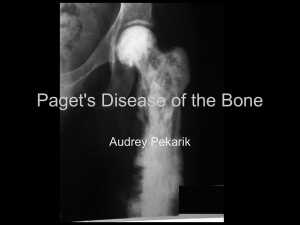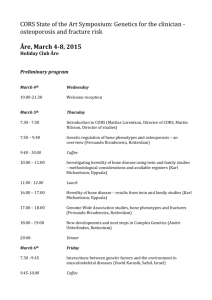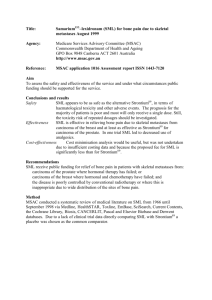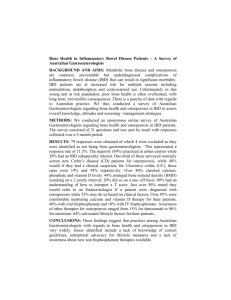Microsoft Word - 1044 - Ostase.doc - the Medical Services Advisory
advertisement
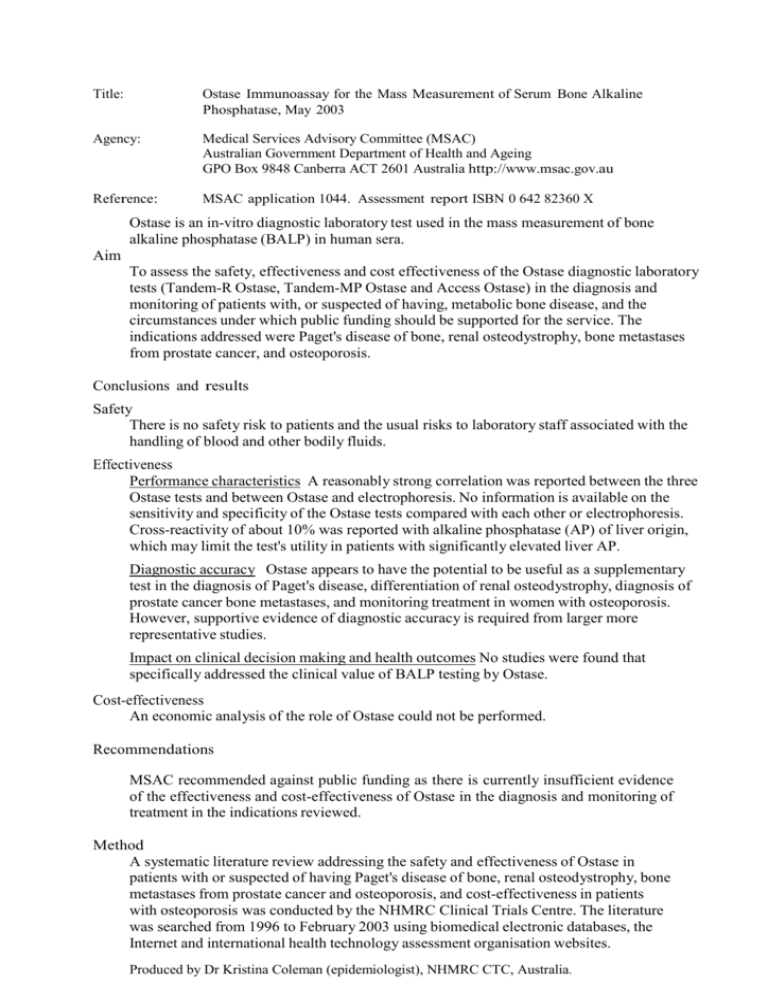
Title: Ostase Immunoassay for the Mass Measurement of Serum Bone Alkaline Phosphatase, May 2003 Agency: Medical Services Advisory Committee (MSAC) Australian Government Department of Health and Ageing GPO Box 9848 Canberra ACT 2601 Australia http://www.msac.gov.au Reference: MSAC application 1044. Assessment report ISBN 0 642 82360 X Ostase is an in-vitro diagnostic laboratory test used in the mass measurement of bone alkaline phosphatase (BALP) in human sera. Aim To assess the safety, effectiveness and cost effectiveness of the Ostase diagnostic laboratory tests (Tandem-R Ostase, Tandem-MP Ostase and Access Ostase) in the diagnosis and monitoring of patients with, or suspected of having, metabolic bone disease, and the circumstances under which public funding should be supported for the service. The indications addressed were Paget's disease of bone, renal osteodystrophy, bone metastases from prostate cancer, and osteoporosis. Conclusions and results Safety There is no safety risk to patients and the usual risks to laboratory staff associated with the handling of blood and other bodily fluids. Effectiveness Performance characteristics A reasonably strong correlation was reported between the three Ostase tests and between Ostase and electrophoresis. No information is available on the sensitivity and specificity of the Ostase tests compared with each other or electrophoresis. Cross-reactivity of about 10% was reported with alkaline phosphatase (AP) of liver origin, which may limit the test's utility in patients with significantly elevated liver AP. Diagnostic accuracy Ostase appears to have the potential to be useful as a supplementary test in the diagnosis of Paget's disease, differentiation of renal osteodystrophy, diagnosis of prostate cancer bone metastases, and monitoring treatment in women with osteoporosis. However, supportive evidence of diagnostic accuracy is required from larger more representative studies. Impact on clinical decision making and health outcomes No studies were found that specifically addressed the clinical value of BALP testing by Ostase. Cost-effectiveness An economic analysis of the role of Ostase could not be performed. Recommendations MSAC recommended against public funding as there is currently insufficient evidence of the effectiveness and cost-effectiveness of Ostase in the diagnosis and monitoring of treatment in the indications reviewed. Method A systematic literature review addressing the safety and effectiveness of Ostase in patients with or suspected of having Paget's disease of bone, renal osteodystrophy, bone metastases from prostate cancer and osteoporosis, and cost-effectiveness in patients with osteoporosis was conducted by the NHMRC Clinical Trials Centre. The literature was searched from 1996 to February 2003 using biomedical electronic databases, the Internet and international health technology assessment organisation websites. Produced by Dr Kristina Coleman (epidemiologist), NHMRC CTC, Australia.






